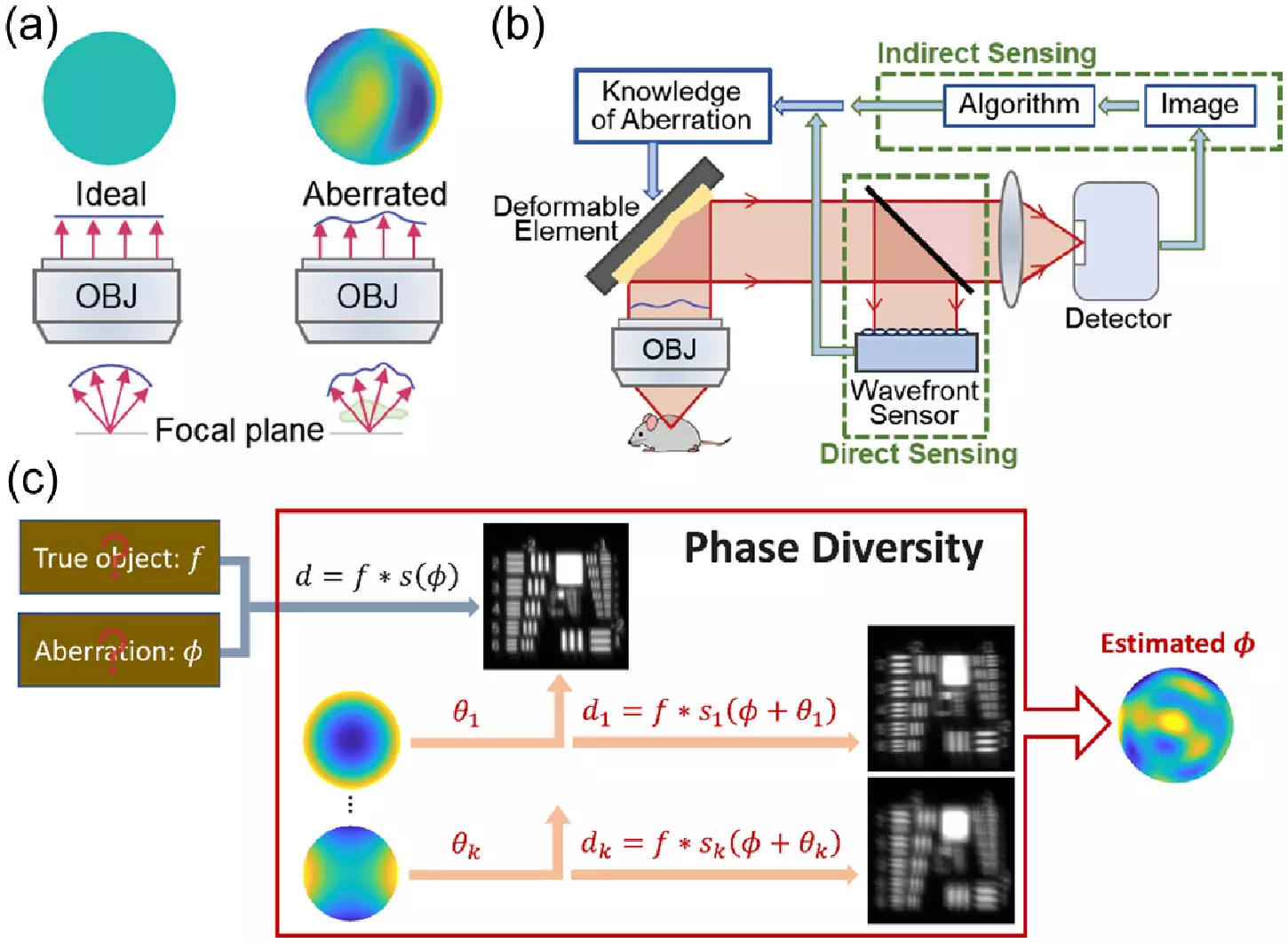The field of microscopy has seen significant advancements in recent years, with researchers constantly striving to improve the clarity and sharpness of imaging techniques. A team of researchers at HHMI’s Janelia Research Campus has taken a unique approach by adapting techniques commonly used in astronomy to enhance microscopy images. Their findings, published in the journal Optica, introduce a faster and more cost-effective method for obtaining clearer and sharper images of biological samples.
Astronomers have long relied on techniques that measure how light is distorted by the atmosphere to enhance the clarity of images captured by telescopes. By applying corrections to cancel out aberrations, astronomers are able to obtain clearer and sharper images of far-away galaxies. Microscopists have begun adapting these methods, known as adaptive optics, to improve imaging of thick biological samples that also bend light and create distortions. However, traditional adaptive optics methods are complex, expensive, and slow, making them inaccessible to many laboratories.
In an effort to make adaptive optics more widely available to biologists, the team at Janelia Research Campus turned their attention to a class of techniques called phase diversity. While these methods have been extensively utilized in astronomy, they are relatively new to the life sciences. Phase diversity involves adding images with known aberrations to a blurry image with an unknown aberration, providing additional information to unblur the original image. Unlike other adaptive optics techniques, phase diversity does not require significant modifications to an imaging system, making it an attractive option for microscopy applications.
The researchers first adapted the astronomy algorithm for use in microscopy and validated it through simulations. They then constructed a microscope equipped with a deformable mirror and two additional lenses, making minor modifications to an existing setup to create the known aberration. Additionally, they enhanced the software used to carry out the phase diversity correction. In initial tests, the team successfully calibrated the deformable mirror 100 times faster than with existing methods and corrected randomly generated aberrations to produce clearer images of fluorescent beads and fixed cells.
The next phase of the research involves testing the method on real-world samples, including living cells and tissues, and expanding its use to more complex microscopes. The team aims to further automate the process and streamline its implementation to make it more user-friendly. By providing a faster and more cost-effective alternative to current techniques, the new method has the potential to democratize adaptive optics, enabling more laboratories to achieve clearer imaging of biological samples.
The integration of astronomy techniques into microscopy represents an exciting advancement in the field of imaging. By leveraging phase diversity methods, researchers can overcome the limitations of traditional adaptive optics and access a simpler, more efficient approach to enhancing microscopy images. The future holds promising opportunities for this innovative method, offering biologists the ability to visualize and study biological samples with unprecedented clarity and precision.


Leave a Reply